The relationship between SEO and content is undeniable. To put it as simply as possible, the foundation of SEO success is high-quality content.
We can define content optimization as the process in which the content on a webpage is optimized. Contrary to popular belief, this is not done for search engines. It is done to create content that is actionable, attractive, and useful for the user.
The internet is growing every single day. There are over 2 million blog posts published every single day. This means that no matter what content you create, there is competition. And a lot of it.
Obviously, regardless of how good your content is, if nobody sees it, you created it for nothing. This is where content optimization steps in and helps.
So, what should you do?
Here are the most important SEO content optimization tips you should know as a beginner.
- Create Descriptive And Accurate Page Titles
- Use Secondary And LSI Keywords
- Increase Content Readability
- Create Useful Or Educational Content
- Focus On Content Depth
- Use Visual Content
- Add Relevant External And Internal Links
- Conclusions
Create Descriptive And Accurate Page Titles
Google has countless ranking factors and title tags stand out as one of the most important ones.
The title is the first thing a person sees when looking for something online.
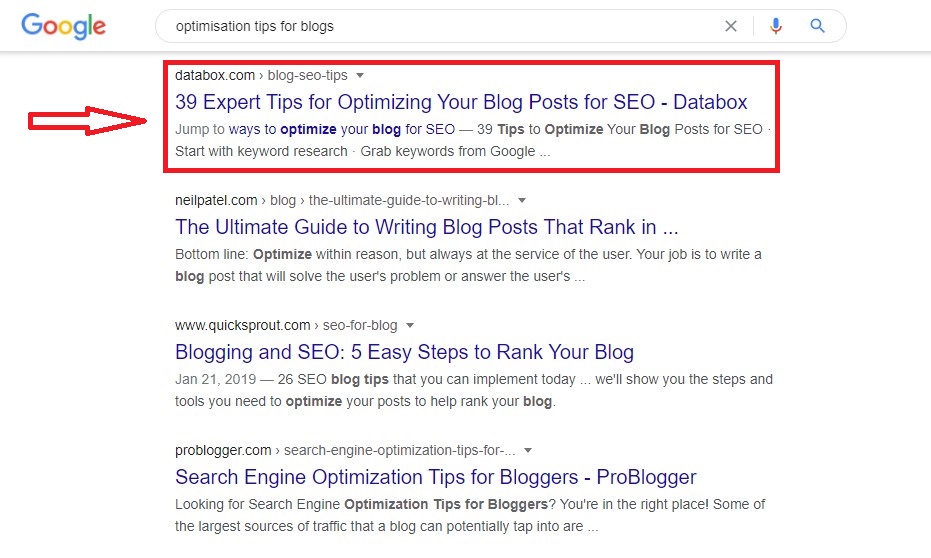
You need to make your titles as accurate and as descriptive as possible. To do that, follow these tips:
- Write For Humans
While ranking is dictated by an algorithm that is run by a machine, at the end of the day, it is a human who clicks on it. It only takes a split second for someone to make a decision: click or look at the next result.
Start by thinking about what customers and the target audience click on. Focus on relevancy and user intent.
If you lack inspiration, analyse your competition but never copy what they do.
- Keep Titles Short
If you want to improve SEO results, your titles have to be short and to the point. This is because when they are too long, Google truncates them and adds […] at the end. You end up with a result like this:

While this practice will not impact SEO, it affects CTR (click-through rate). Eventually, this impacts positions.
The commonly-mentioned recommendation is that the length of the title tag should be around 60 to 70 characters but the actual limit Google uses is 600 pixels. Because of this, the character limit number varies as there are different widths for written characters.
When you write the SEO title, the best thing you can do is to manually check title length. If you use WordPress, you can use an SEO plugin but if you do not, a tool like MetaTags.io can do wonders.
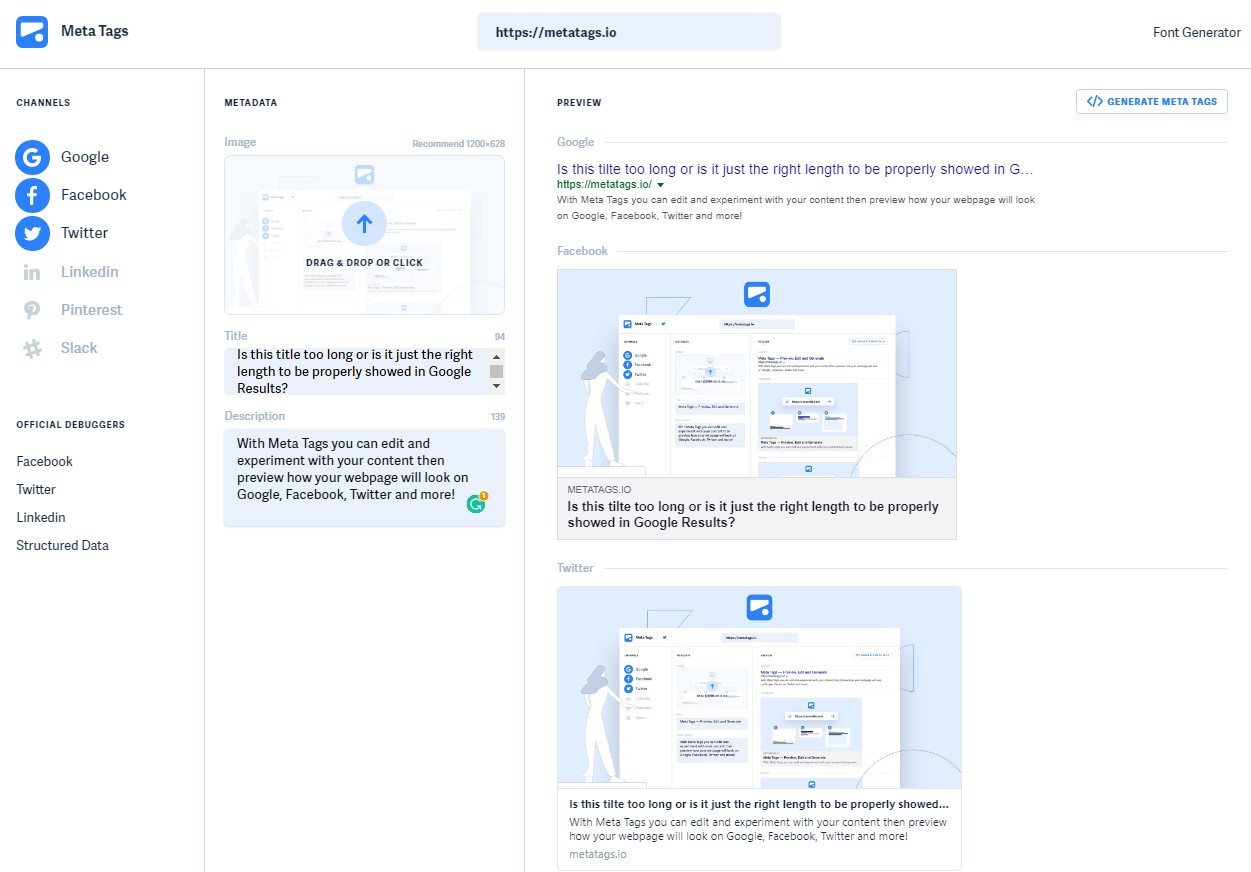
Manually add meta tags and titles to see if they will be truncated or not. Then, check to see how the results will appear when shared on Twitter and Facebook.
One More Thing: Remember that the page title is different from the SEO title, which you add with meta tags. Your actual article title can be longer as long as you add a different version for SEO.
- Use The Primary Keyword
Preferably, add your keyword closer to the title’s beginning since more weight is put on it by Google. This also helps with increasing click through rates.
There are situations in which this is impossible. For instance, when your keyword is “mobile apps Android”, it is difficult to make it fit.
The good news is that Google understands this and they take into account keyword variations. This means that you can use “Android mobile apps” without a problem.
Extra Tip: Whenever possible, try to optimize your title for extra keywords, like “cheap Android mobile apps”, which would cover variations like “Android apps”, “cheap apps”, “Android mobile apps”, and more.
- Write Catchy Titles
In an attempt to increase traffic, many people use clickbait. This is a mistake that you should never make. Your title should always tell the visitor what he/she will read. At the same time, it needs to convince people to click. When this does not happen, Google sees it as a negative thing since CTR is low.
If the number of people that click on the title is high, Google increases keyword positioning.
The easiest way to write a catchy title is to use words that can increase CTR, like “example” or “free”. Obviously, there are many other things that you can do.
Writing a catchy title can be difficult. Read more about it here:
5 Easy Tricks To Help You Write Catchy Headlines
Use Secondary And LSI Keywords
Secondary keywords are very easy to understand. They are simply keywords that are secondary to the main seek keyword you use to optimize your page. LSI keywords are similar but different at the same time.
LSI stands for “latent semantic indexing”. Simply put, it is an algorithm process that is used by search engines to identify related words. Google practically uses word associations to better understand what the content is about.
LSI words and phrases are very useful in your content because, in natural speech, they naturally come up. It is normal for Google to identify them and use them.
The problem is that it is very difficult for a writer to come up with many LSI keywords. Fortunately, there are many tools you can use. For instance, look at LSIGraph.
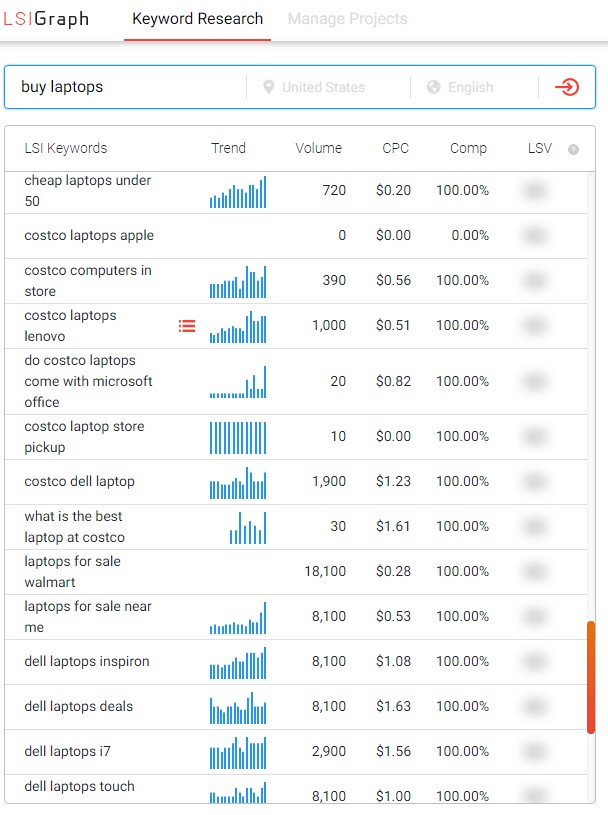
See if the words recommended make sense in your content and add some when you can.
Note: Do not confuse LSI with NLP (natural language processing). NLP is a part of artificial intelligence. It helps the computer to understand, manipulate, and interpret human language.
Increase Content Readability
People scan. They do not read.
When a visitor lands on your page, it takes him/her 0.2 seconds to form a full first impression. This means that if the content is not easy to skim, there is a very good possibility that the visitor leaves, which impacts time spent on site and bounce rate, which in turn has a small effect on search engine rankings.
Your content has to be readable. Some tips to help with that are:
- Make sentences shorter
Long sentences are harder to follow. Because of this, before the written content is published, scan the text. See if there are long sentences. If possible, make them shorter.
- Don’t assume people know what you are talking about
“Insider” swords, slang, acronyms, and jargon should be reduced unless you are 100% sure that your target audience will understand what you say. Generally speaking, simple words any person can easily understand are preferred.
- Stay on point
When you proofread your article, look for paragraphs and sentences where you wandered off the main point. This happens more often than we think since writers use stories and metaphors.
- Use formatting
Use appropriate formatting with H1 tags, whitespaces, bold, italics, and subheadings to emphasize the important parts of the text. Also, use images whenever appropriate.
Create Useful Or Educational Content
SEO content optimisation is often a process through which you remove unhelpful content and you add useful content. You do this in order to increase the possibility of gaining natural organic backlinks.
One of the easiest ways to attract links is to offer freemium content.
Simply put, you want to be more useful or more educational than your competition. If you do that, eventually, people start to notice you.
As an example, let’s think about an eCommerce website. (We have a guide on eCommerce SEO here if you want to learn even more).
On product pages, you can easily add quick buyer guides, a list of benefits, fun facts, a highly detailed description, or video content, like in the example below.
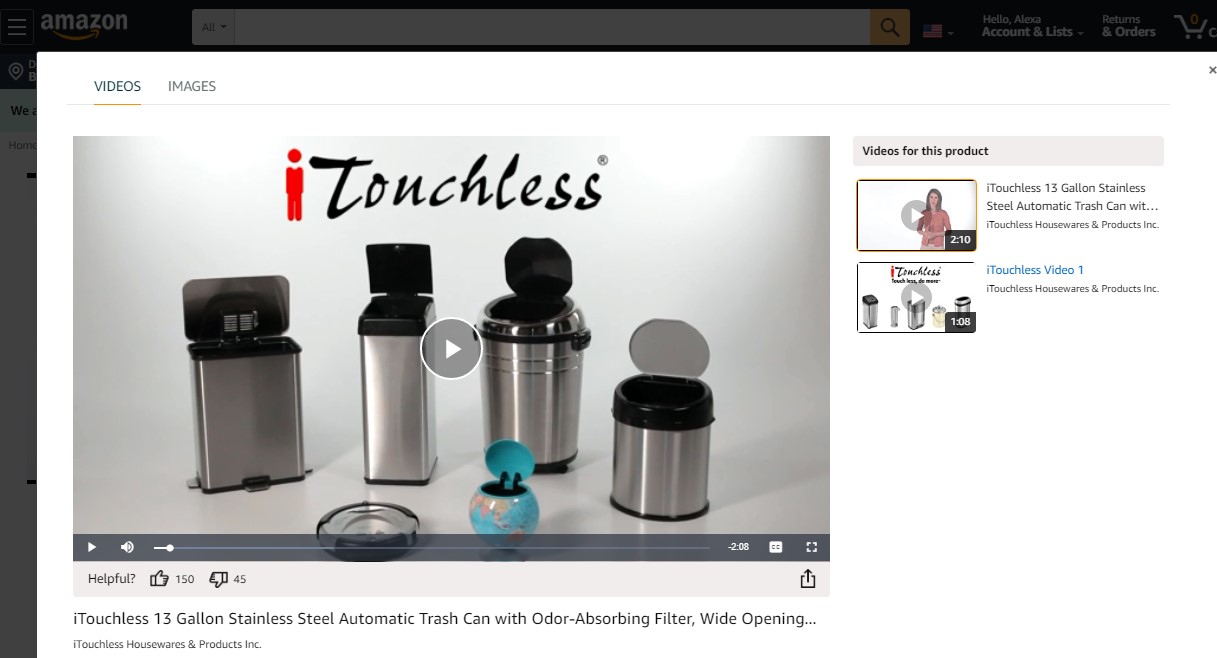
Generally speaking, the more you help the reader, the higher the possibility that you get better SEO results.
Focus On Content Depth
In SEO, everyone talks about the fact that you have to create long-form content since it ranks better.
Every few months, a new study is done that shows us how many words are included in the articles that rank best in search engines. This blindly leads people towards trying to reach a word count as opposed to focusing on what is very important: content quality.
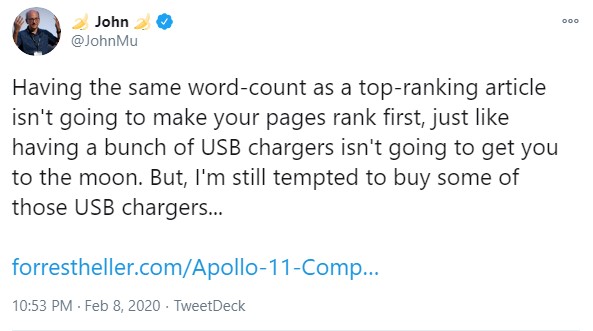
It is not the content length that counts. As you optimise your content for SEO, you need to focus on content depth.
Just think about Wikipedia, which is the second most visited website in the US and the third most visited in the entire world (source).
Why are so many Wikipedia pages in the top 3 search results for highly-competitive keywords?
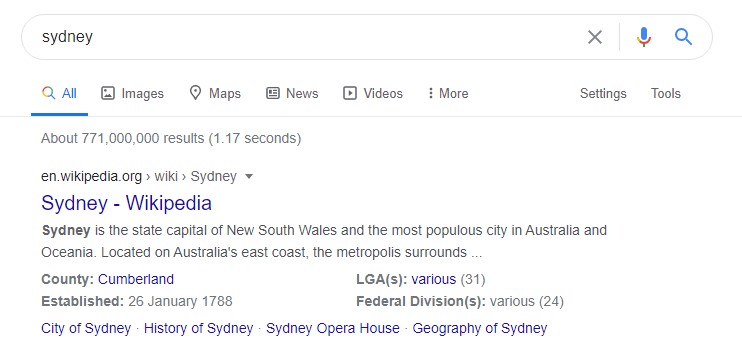
Content depth. Wikipedia pages are to-the-point and they always try to completely cover a topic.
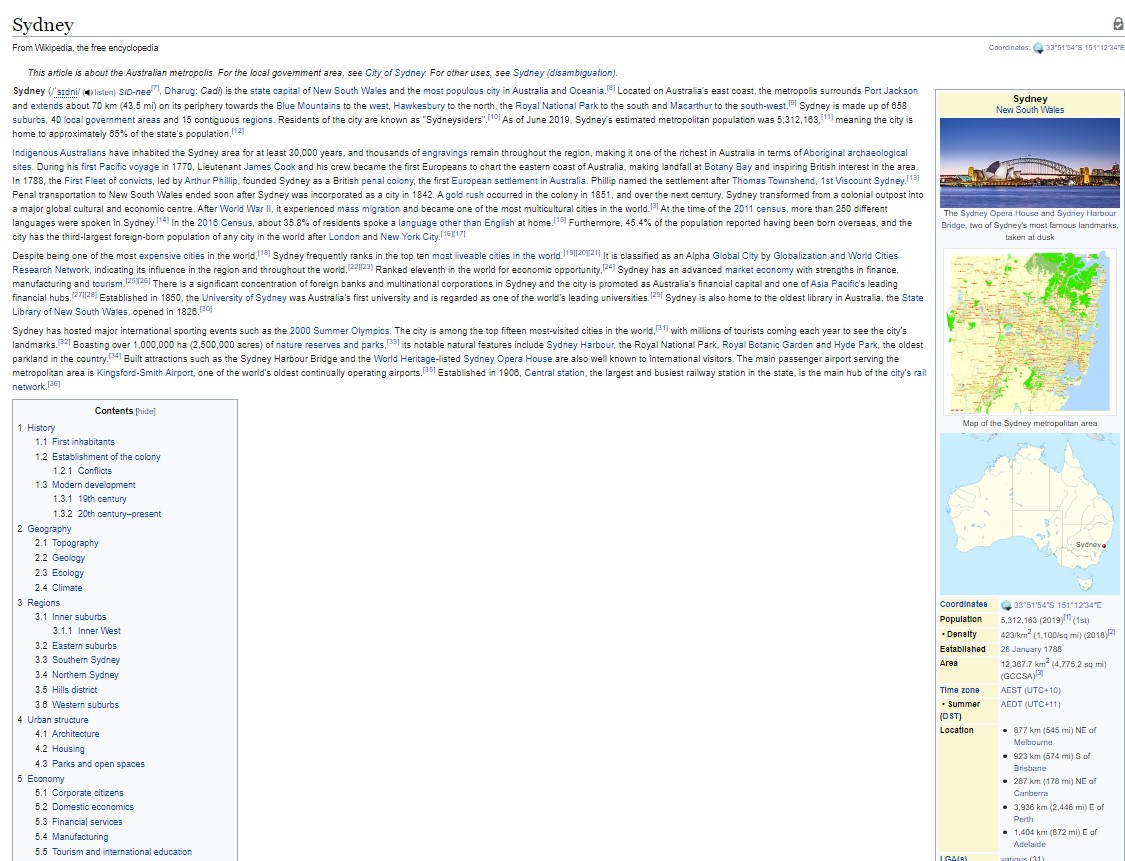
Can you create better content that is more informative than what you see on the Sydney Wikipedia page?
The key takeaway here is when you go deep and you cover the topic in full, without using fluff words or unnecessary metaphors to reach a specific word count someone recommended, you create better content.
This also means that the article you read right now cannot reach top 1 ranking for a keyword like “SEO content optimisation” because content depth is not as high as it could be. However, the goal with this article is another one, to give you some actionable tips to use right now, as a beginner in SEO.
Extra Tip: When you create in-depth content, you eventually need to update it. As you do this, use timestamps to clearly show the visitor and Google when this happened. This is a little helpful in boosting SERP click-thru rate.
Use Visual Content
The vast majority of internet users do not like huge chunks of text. At the same time, visual content draws and keeps the attention of the visitor.
Because you want to keep your visitors on a page and not have them bounce, visual content has to be used.
Usually, you want to add something at least every 400-500 words or so but this is just a general guideline that can be ignored based on what you present.
The most common examples of visual content are:
- Images
Whenever you cannot add something better, you can create or find images that break up text paragraphs.
Two things are really important when you add images to your content. The first one is that the images you use need to be of high quality and the second one is that they have to be related to the content in the area where they are added.
Extra Tip: When you create images, make sure that you also use the best image SEO practices.
- Screenshots
Screenshots are particularly useful when you describe an online application or software. You can see examples above.
Whenever possible, annotate the screenshots you take with text, circles, boxes, and/or arrows to make them more useful.
- Infographics
If you want to highlight statistics or cover a complex process, an infographic can easily visualize data inside your copy. Also, when you create an infographic, you own it and you can promote it in various ways.
The easiest way to create an infographic is to use a service like Canva.
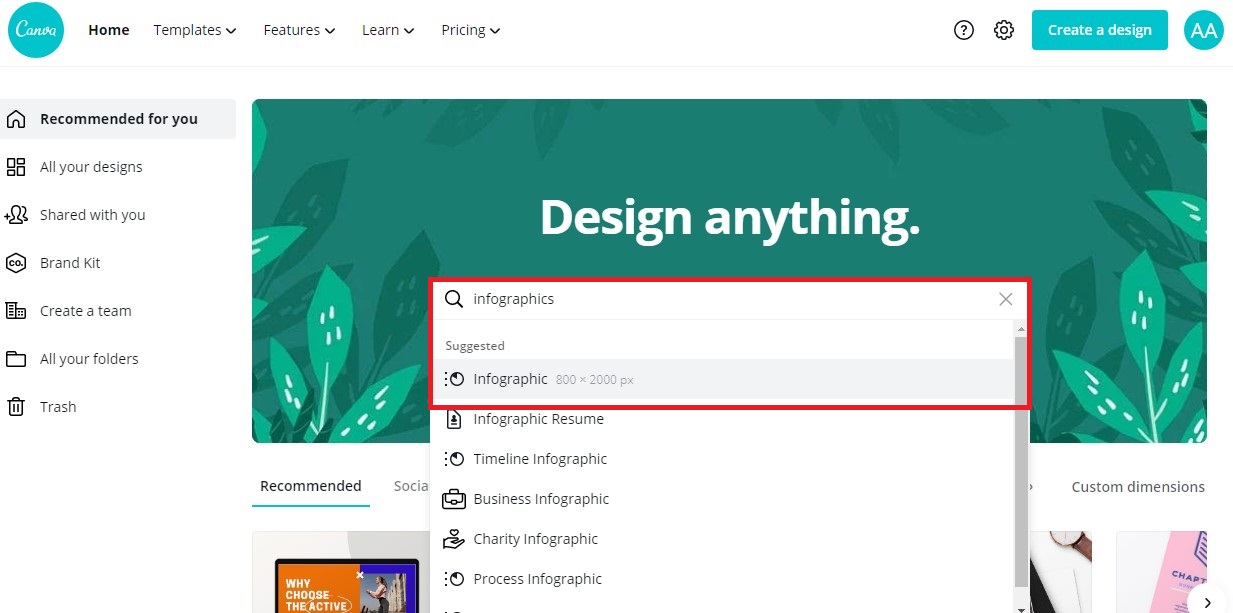
After you finish your infographic, you can promote it or use parts of it inside your content. Just make sure that your research is proper and your sources are legit.
- Illustrations
Illustrations are very effective as featured images but they can also easily highlight some points you want to make.
WikiHow is a great example of a website that often uses illustrations.
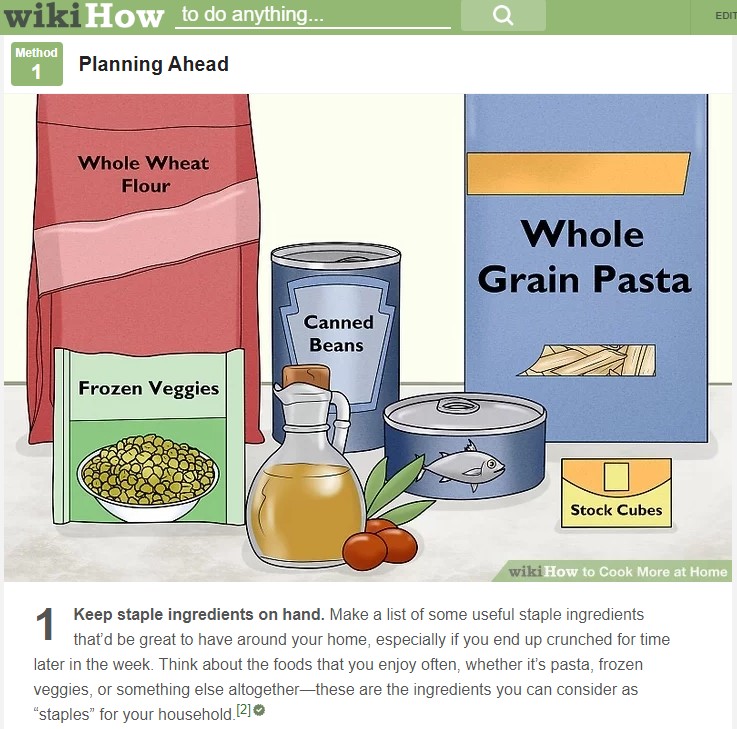
Always create illustrations that reflect the brand’s voice and the message you want to send.
- Social Media Posts
Whenever relevant, embed social posts that add value to the content you present. Use your own content when it is relevant or share posts from influencers or other companies.
You can embed social media posts from Twitter, Instagram, Facebook, and many other networks. Just make sure they add value.
- Memes and GIFs
GIFs and memes can be very effective but you have to be careful. The big advantage is that this type of visual content adds humour and shows the reader the human side of the brand behind the post.
Added GIF or Meme
Memes and GIFs are very easy to consume. They are extremely helpful in conveying a feeling or an emotion. However, these can be offensive or tacky for some people. Only share appropriate ones based on your target audience.
- Videos
According to Hubspot, 54% of people want more video content from internet marketing campaigns. This is just one example of a statistic that shows us video is important on the internet.
Out of all visual content options you have, video is the most effective at boosting blog performance.
The best thing you can do is to create original video content. However, you can also embed relevant videos created by someone else. Just make sure you give credit and you only add videos that add value to the content.
Add Relevant External And Internal Links
The last really important tip for beginners about SEO content optimisation is directly connected with website and content authority.
You want to establish trust with both search crawlers and users. This can be done by adding external links to high authority websites. Basically, when you think that sending a person to another web page adds value to the content you create, the external link is justified.
At the same time, you need to add internal links. This creates a stronger on-site SEO structure. Also, if people click on the links, the bounce rate is reduced while time on site is increased.
While on-page SEO is a very complex topic and many things can be said about it, at least perform these two important actions.
Conclusions
The 7 tips presented in this small guide for content optimisation for SEO are meant to be very useful for beginners. Use them as a foundation of high-quality content creation.
I purposely chose not to talk about advanced optimisation techniques and strategies because these come second.
I could have talked about structured data markups, schema, meta tags, dwell time, and a lot more. But, all of these are meant to be used by those with more advanced knowledge because the main focus of SEO in regards to content creation is to offer the best possible experience for the visitor and publish something valuable.
When you feel like you mastered all the tips presented, only then should you move towards the more advanced SEO knowledge.




